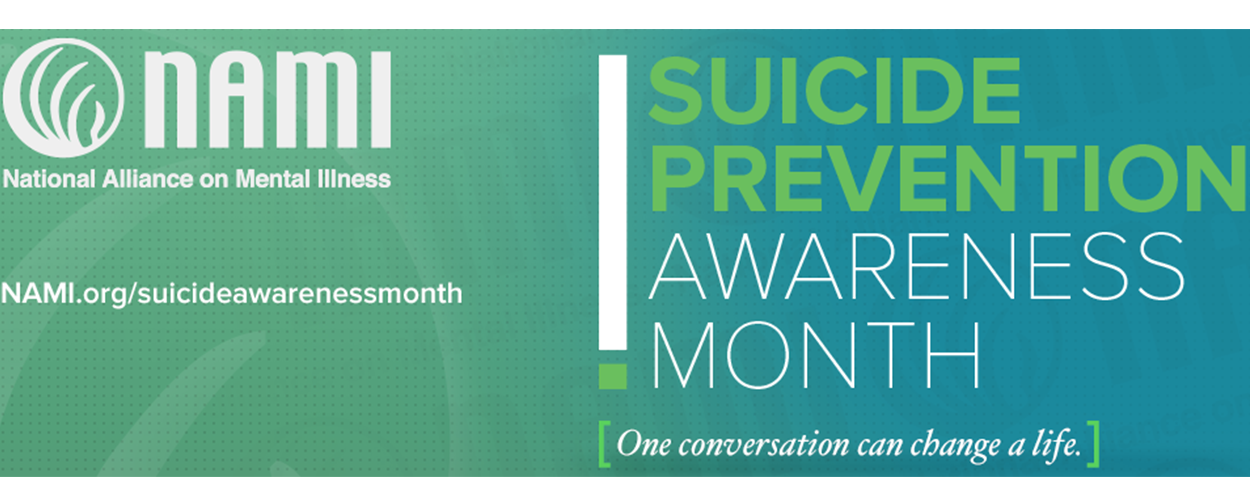September is National Suicide Prevention Awareness Month, a time when organizations and individuals work to bring awareness to suicide for those at risk, their caregivers, communities, and those who work directly with vulnerable, at risk populations, like the caseworkers at One Hope United. While September may be just 30 days long, suicide prevention is an issue for all of us to be aware of 365 days a year.
The statistics around suicides in children and youth are staggering and sobering:
- Suicide is the 10th leading cause of death in the U.S., the 3rd leading cause of death for people aged 10–24 and the 2nd leading cause of death for people aged 15–24.[1]
- More than 90% of children who die by suicide have a mental health condition.[2]
- Of the 3.4 million adolescents aged 12 to 17 in 2014 who received specialty mental health services, 29.1% reported receiving services because they were thinking about or attempting suicide.[3]
The situation, however, is not hopeless. There are steps that each of us can take to support those living with mental illness, recognize the signs of those who may be considering suicide, and take action when we see someone who needs help. Below are some tips and techniques from two trusted resources whose guidelines align with with our own standards of care and treatment.
How to help someone considering suicide:
- Get professional help. Do everything in your power to get a suicidal person the help he or she needs. Call a crisis line for advice and referrals. Encourage the person to see a mental health professional, help locate a treatment facility, or take them to a doctor’s appointment. Your loved one may be angry but their life depends on getting help.
- Follow-up treatment. If the doctor prescribes medication, make sure your friend or loved one takes it as directed. Be aware of possible side effects and be sure to notify the physician if the person seems to be getting worse. It often takes time and persistence to find the medication or therapy that’s right for a particular person.
- Be proactive. Those contemplating suicide often don’t believe they can be helped, so you may have to be more assertive at offering assistance. Saying, “Call me if you need anything” is too vague. Don’t wait for the person to call you or even to return your calls. Drop by, call again, invite the person out.
- Encourage positive lifestyle changes, such as a healthy diet, plenty of sleep, and getting out in the sun or into nature for at least 30 minutes each day. Exercise is also extremely important as it releases endorphins, relieves stress, and promotes emotional well-being.
- Make a safety plan. Help the person develop a set of steps he or she promises to follow during a suicidal crisis. It should identify any triggers that may lead to a suicidal crisis, such as an anniversary of a loss, alcohol, or stress from relationships. Also include contact numbers for the person’s doctor or therapist, as well as friends and family members who will help in an emergency.
- Remove potential means of suicide, such as pills, knives, razors, or firearms. If the person is likely to take an overdose, keep medications locked away or give out only as the person needs them.
- Continue your support over the long haul. Even after the immediate suicidal crisis has passed, stay in touch with the person, periodically checking in or dropping by. Your support is vital to ensure your friend or loved one remains on the recovery track.[4]
Q: What are some of the risk factors for suicide?
A: Risk factors vary with age, gender, or ethnic group. They may occur in combination or change over time. Some important risk factors are:
- Loss or break up of special relationship.
- Depression and other mental disorders
- Substance-abuse disorder (often in combination with other mental disorders)
- Prior suicide attempt
- Family history of suicide
- Family violence including physical or sexual abuse
- Firearms in the home
- Incarceration
- Exposure to suicidal behavior of others, such as family members or peers
However, it is important to note that many people who have these risk factors are not suicidal.
Q: What are signs to look for?
A: The following are some of the signs you might notice in yourself, a family member, or a friend that may be reason for concern.
- Talking about wanting to die or to kill oneself
- Looking for a way to kill oneself, such as searching online or buying a gun
- Talking about feeling hopeless or having no reason to live
- Talking about feeling trapped or in unbearable pain
- Talking about being a burden to others
- Increasing the use of alcohol or drugs
- Acting anxious or agitated; behaving recklessly
- Sleeping too little or too much
- Withdrawing or feeling isolated
- Showing rage or talking about seeking revenge
- Displaying extreme mood swings.
- Giving away special belongings.
Seeking help is a sign of strength, if you are concerned, go with your instincts, get help!
Q: What can I do for myself or someone else?
A: If you are concerned, immediate action is very important. Suicide can be prevented and most people who feel suicidal demonstrate warning signs. Recognizing some of these warning signs is the first step in helping yourself or someone you care about.[5]
One Hope United’s Screening, Assessment and Support Services (SASS) program provides intensive mental health services for children and youth who qualify for a medical card and who may need hospitalization for mental health care. SASS providers follow up with the child and family for a period of 90 days after the initial crisis in order to assist in stabilizing that youth.
SASS is available in Marion, Clay, Fayette, Effingham, Jasper, Jefferson, Hamilton, Wayne, and Washington counties in the state of Illinois. For more information, please call: 618-242-8266 or download a PDF of our brochure.
Additional Recommended Resources:
- The Substance Abuse and Mental Health Services Administration (SAMHSA) has created the National Suicide Prevention Lifeline Wallet Card, which is available as a free download or can be ordered online. It includes the National Suicide Prevention Lifeline toll-free number and lists warning signs.
- For educators, SAHMSA’s Preventing Suicide: A Toolkit for High Schools helps schools and partners assess, understand, and identify different aspects of suicide prevention.
- The Lake County Suicide Prevention Task Force Resource Guide, available in English and Spanish, includes a comprehensive list of local and national organizations, most of whom offer services on a sliding-fee scale based on income.
[1] https://www.nami.org/Learn-More/Mental-Health-By-the-Numbers#sthash.vWOlDABO.dpuf
[2] Ibid.
[3] “Receipt of Services for Behavioral Health Problems: Results from the 2014 National Survey on Drug Use and Health.” Available at: http://www.samhsa.gov/data/sites/default/files/NSDUH-DR-FRR3-2014/NSDUH-DR-FRR3-2014/NSDUH-DR-FRR3-2014.htm
[4] http://www.helpguide.org/articles/suicide-prevention/suicide-prevention-helping-someone-who-is-suicidal.htm
[5] http://www.nimh.nih.gov/health/publications/suicide-a-major-preventable-mental-health-problem-fact-sheet/index.shtml













